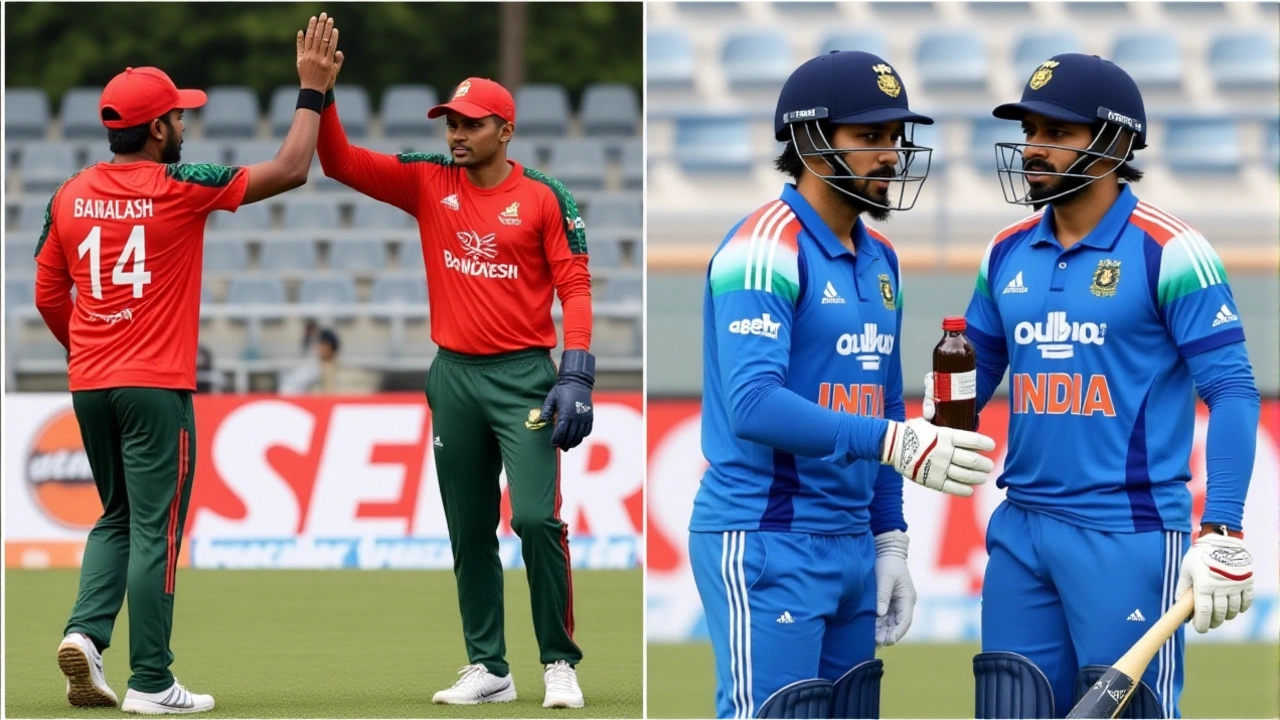
The second Test of the South Africa Tour of India 2025 will begin on November 21, 2025, at the Himachal Pradesh Cricket Association Stadium in Dharamsala — a venue that once lay buried under 30 feet of garbage and illegal settlements. Starting daily at 19:30 IST, the match isn’t just another fixture on the calendar. It’s a quiet triumph of will over waste, of order over chaos. The Board of Control for Cricket in India (BCCI) confirmed the dates, while Cricket South Africa (CSA) announced a Proteas squad brimming with Betway SA20 stars, led by captain Aiden Markram.
A Stadium Born from Trash
Before it became a temple of cricket, the land beneath the Dharamsala stadium was a dumping ground. For nearly two decades, municipal waste piled up — 150,000 tons of it, according to HPCA records. Some mounds reached 30 feet high. Local families, around 200 of them, had built makeshift homes on the slopes, turning a neglected hillside into an informal settlement. No one thought this place could ever host an international match. The Dharamsala Municipal Corporation had given up. Environmental agencies called it irreparable.
Then came the HPCA. In 2006, they didn’t just plan a stadium — they launched a rebellion against neglect. Soil testing revealed toxic runoff from decades of waste. Contaminated layers had to be excavated, treated, and replaced. The hill’s natural slope, once part of the problem, became the solution: it was reshaped into tiered seating with built-in drainage, eliminating the waterlogging that had made the site unusable. The project cost ₹1.2 billion ($16.3 million in 2008), funded by state government backing and private donations. By 2008, the garbage was gone. The settlements were relocated. And the stadium opened with a quiet ceremony — no fanfare, just a single ball bowled onto the green pitch.
From Wasteland to World Stage
Since then, the Himachal Pradesh Cricket Association Stadium has hosted 12 Test matches — against England, Australia, Pakistan, and Afghanistan. The Himalayas loom behind the pavilion, turning every session into a postcard. But the stadium’s legacy isn’t just scenic beauty. It’s proof that infrastructure can rise from the most broken places. In 2007, The Times of India reported the site as "a blight on the region." By 2010, it was being cited by the World Bank as a model for sustainable urban redevelopment in mountainous regions.
Even the lighting system was redesigned. Unlike the blinding floodlights of Mumbai or Ahmedabad, Dharamsala’s setup uses angled fixtures to minimize light pollution — protecting the local bird populations and preserving the night sky for tourists and residents alike. That attention to detail? It wasn’t accidental. It was born from the memory of what was here before.

Why This Match Matters
The timing is deliberate. The match follows the ICC Men’s T20 World Cup 2026, which South Africa and India will co-host with Sri Lanka. The Proteas, fresh from that tournament, will arrive with momentum — and a squad shaped by the SA20 league’s fast-paced, high-pressure environment. Markram, a former SA20 MVP, brings a blend of grit and calm that mirrors the stadium’s own journey: steady, resilient, quietly powerful.
The 7:30 PM start time? It’s not just for TV audiences in the UK and Australia. It’s also about comfort. Late November in Dharamsala means crisp air, dropping temperatures, and clear skies. Players won’t sweat through the day. Fans won’t wilt under the sun. And the pink ball — if used — will swing under the Himalayan twilight in a way no other Indian venue can replicate.

A Symbol, Not Just a Venue
There’s a reason the BCCI didn’t pick a bigger city for this Test. Not Mumbai. Not Delhi. Not Chennai. Dharamsala was chosen because its story is the story of modern Indian cricket’s evolution — from neglect to ambition, from corruption to cleanup. The stadium didn’t just replace a dump. It replaced a mindset. It told a generation: even the most forgotten places can become sacred.
When the first ball is bowled on November 21, the crowd won’t just be cheering for runs or wickets. They’ll be cheering for the 200 families who were relocated with dignity. For the engineers who tested soil at 50 different depths. For the environmentalists who insisted on native grasses over synthetic turf. For the quiet, stubborn belief that something beautiful could grow from something broken.
Frequently Asked Questions
Why was Dharamsala chosen for this Test instead of a bigger city?
The BCCI selected Dharamsala for its symbolic value — the stadium’s transformation from a garbage dump into a world-class venue represents a powerful narrative of renewal. With cooler evening temperatures and unique natural lighting, it also offers a distinctive playing environment. The venue’s smaller capacity (around 23,000) ensures an intimate atmosphere, ideal for high-stakes Test cricket after the global spectacle of the T20 World Cup.
How did the land get cleared, and what were the environmental challenges?
Over 150,000 tons of municipal waste were removed, requiring heavy machinery and soil remediation to neutralize toxins from decades of dumping. The site had severe waterlogging due to improper drainage, which was solved by redesigning the terrain’s natural slope into a drainage system. Around 200 illegal settlements were relocated with government support, and native vegetation was reintroduced to stabilize the soil and prevent erosion.
Who is leading the South African team, and what’s their connection to the SA20 league?
Captain Aiden Markram leads the Proteas, and nearly half the squad includes players from the Betway SA20 league. This is no coincidence — CSA has increasingly used SA20 as a talent pipeline for Test cricket, valuing the league’s intensity and exposure to high-pressure situations. Markram himself was named Player of the Tournament in the 2024 SA20 season.
Why is the match scheduled at 7:30 PM IST?
The evening start accommodates international broadcasters in Europe and North America, where prime-time viewing aligns with the match’s conclusion. It also takes advantage of Dharamsala’s cooler November evenings, improving player performance and spectator comfort. This follows the BCCI’s successful shift to day-night Tests, with pink-ball matches already held in Kolkata and Ahmedabad.
Has this stadium hosted other major matches since its opening?
Yes. Since its 2008 inauguration, the Himachal Pradesh Cricket Association Stadium has hosted 12 Test matches, including India vs. England in 2012 and India vs. Australia in 2013. It also hosted the 2016 Asia Cup and several IPL games. Its most recent Test was India vs. Afghanistan in June 2018, where spinners dominated on a pitch that retained moisture from the Himalayan air.
What’s the broader significance of this match for India-South Africa cricket relations?
This Test series deepens the strategic partnership between the BCCI and CSA, fueled by shared interests in T20 leagues and player exchanges. The SA20’s growing Indian fanbase — highlighted by the November 12, 2025, SA20 India Day in Mumbai — shows how commercial cricket is blurring national boundaries. This match isn’t just about competition; it’s about mutual investment in the future of the game.

Write a comment